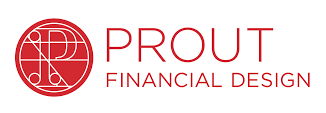by D. Dina Friedman, 06/29/2020, Hadley, MA
Adult Category
Two days into the darker side of the solstice, I open the door to coreopsis that has burst into yellow bloom, and set out to de-clutter the day lilies from the ever-colonizing irises. Luscious dirt in my hands as I try one more time to bury the onions that cling by the last threads of their roots, as each night my rush of hose-water mudslides the bulbs bare. It’s all I can do to saturate the soil in this ongoing drought, even if relief is momentary and not enough. Again, my friend texts, small black words on the plastic screen. “I feel sad today.”
I want to tell him to pack up and leave his boxy New York studio, even if it’s filled with plants and paintings and the windows are large. But he has a 90-year-old mother he can’t abandon. So we talk while I pull more weeds, dreaming together about the pull of open air. Forty years ago, or was it more, we hiked together above tree-line, many days in the White Mountains, the vistas alternately opening into possibility, then closing into dense fog. We discuss the need to tread slowly, one step and another, how in the fog, the next cairn isn’t visible until one is nearly on top of it. “I need to remember not to speculate,” he says, the words “how long,” only making the fog thicker.
The cauliflower is purpling at the top and big enough to pick, though it could still get bigger. The bok choy is widening its girth. I never know how much to let things grow. Impatience is in my New York blood, and there’s also the question of balance between tenderness and food volume. I want to tell my friend that in my garden, life feels (unfairly) normal. This year seems like every year with its idiosyncratic challenges of weather, bugs, critters, how much I curbed or didn’t curb myself from planting too early or too close together. The only difference, perhaps, is an absence of outside obligations that makes evening watering an easy ritual rather than something to squeeze in, or sometimes have to skip, or do too early, or do in the dark.
I want to give my friend the solace of my garden, where time is both glacial and miraculous, where after days of gazing at bare dirt, green shoots suddenly emerge, and just a day or two later, leaves and vines grow like Jack’s magic beanstalk; where days can revolve around the pull between weeding and harvesting, transplanting, dividing, considering how to display and how much to cull, what to do with the excess of mint spilling off the hill, how to coax the pea tendrils to grab on to the metal lawn sign holders that serve as my makeshift fence, and how to keep up with the bundles of kale and chard that grow back in an eye-blink instant after being picked nearly clean.
And yet, around us, the world rages. My friend sends pictures from Prospect Park, Greenwood Cemetery, close ups of carved details in Brooklyn brownstones blistering in the hot sun. He’s telling me he’s nervous as the weather warms and things re-open, and there are more people who need to be passed by—1 out of 40 infected. From his rooftop he hears the shouting, sees the helicopters hover as people pour out to release their anger onto the city streets. The world is tilting, like my onions, leaning every which way as they strain to continue grabbing hold. If the onions don’t make it, I’ll eat the greens—cherish the small bulbs, rely on the leeks I dried last year. Adaptation is key, but for those in the streets, change is not so simple. The roots of racism are as deep and impossible as the irises I can’t dig up, can only pull one by one, over and over, as they keep growing back.
We need a bulldozer. And when our privileged flowers are destroyed, we need the patience and confidence that what grows back will ultimately be more beautiful, even if it means staring at the naked dirt until we can all take part in the planting, or giving over the planting to those who’ve been confined, boxed in by a virus that’s more invisible and more deadly than what we’re currently facing, a virus that requires changes that might be even more drastic than those we’ve made to adapt to the pandemic, but with an emphasis on uncovering and listening, rather than masking and distancing.






